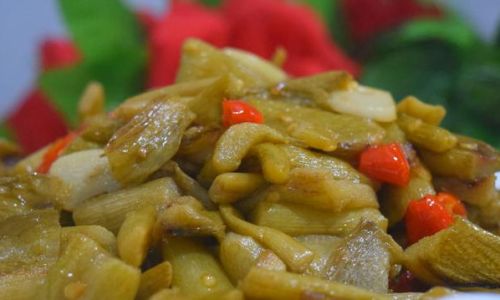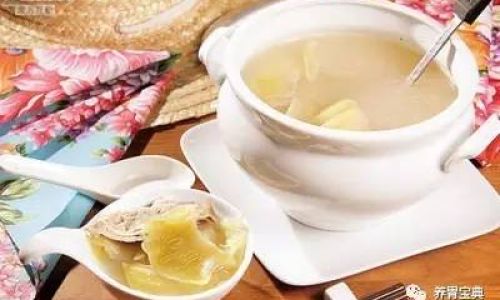Table of content
Stir-fried chicken is a beloved dish across the globe, celebrated for its versatility, speed, and ability to transform simple ingredients into a flavorful meal. Whether you’re a busy parent, a college student, or a cooking enthusiast, mastering the technique of stir-fried tender chicken opens doors to endless culinary possibilities. This article will guide you through creating a restaurant-quality dish at home, focusing on achieving that coveted tender texture and bold flavors without unnecessary complexity. By the end, you’ll have a go-to recipe and the confidence to experiment with your own twists.
The Science Behind Tender Stir-Fried Chicken
Before diving into the recipe, it’s essential to understand why stir-fried chicken can sometimes turn out dry or chewy. The key lies in two factors: heat control and protein structure. Chicken breast, the most commonly used cut, is lean and prone to overcooking. When exposed to high heat for too long, its proteins tighten, squeezing out moisture and resulting in toughness. However, with the right techniques, you can lock in juiciness while developing a crispy, caramelized exterior.

Essential Ingredients for Success
To keep this dish simple yet flavorful, focus on high-quality, fresh ingredients. Here’s a breakdown of what you’ll need:
- Chicken: Opt for boneless, skinless chicken thighs over breasts for added richness and forgiveness during cooking. If using breasts, slice them thinly against the grain to shorten cooking time.
- Marinade: A blend of soy sauce, cornstarch, and baking soda works wonders. Soy sauce adds umami, cornstarch creates a protective coating, and baking soda gently breaks down tough fibers.
- Aromatics: Garlic, ginger, and scallions form the flavor base. Their pungent notes mellow during cooking, leaving a fragrant backbone.
- Vegetables: Bell peppers, snap peas, or mushrooms add texture and nutrition. Keep them uniformly sized for even cooking.
- Sauce: A mixture of oyster sauce, rice vinegar, and sesame oil balances sweet, salty, and tangy notes. Adjust ratios to taste.
Equipment Checklist
You don’t need fancy tools, but the right equipment streamlines the process:

- Wok or Large Skillet: A wok’s sloped sides promote efficient heat distribution, but a heavy-bottomed stainless steel or cast-iron skillet works too.
- Sharp Chef’s Knife: Essential for slicing chicken and vegetables uniformly.
- Cutting Board: Use plastic for poultry to avoid cross-contamination.
- Tongs or Spatula: For flipping ingredients without piercing the chicken.
- Thermometer (Optional): Ensures chicken reaches 165°F (74°C) for safety.
Step-by-Step Cooking Process
Prep Like a Pro
- Slice the Chicken: If using thighs, remove excess fat and cut into bite-sized pieces. For breasts, slice diagonally into ¼-inch thick strips.
- Marinate: In a bowl, combine chicken with 1 tbsp soy sauce, 1 tsp cornstarch, ½ tsp baking soda, and a pinch of pepper. Mix well and let sit for 15–30 minutes (no longer, as baking soda can impart a soapy taste if over-marinated).
- Prep Vegetables: Julienne bell peppers, trim snap peas, or slice mushrooms. Mince garlic and ginger; chop scallions.
Master the Heat
- Preheat the Pan: Set your wok or skillet over high heat until a drop of water evaporates instantly. Add 1–2 tbsp oil (neutral like vegetable or peanut) and swirl to coat.
- Test the Heat: Add a piece of chicken—if it sizzles vigorously, the pan is ready.
Stir-Fry Technique
- Cook in Batches: Overcrowding the pan lowers the temperature, leading to steaming instead of searing. Fry chicken in a single layer, stirring occasionally, until golden (2–3 minutes). Remove and set aside.
- Sauté Aromatics: Add a touch more oil if needed. Toss in garlic and ginger, stirring for 30 seconds until fragrant.
- Add Vegetables: Toss in harder veggies first (e.g., bell peppers), cooking for 2 minutes. Add quicker-cooking ones (e.g., snap peas) last.
- Reintroduce Chicken: Return chicken to the pan. Pour in the sauce mixture (2 tbsp oyster sauce, 1 tbsp rice vinegar, 1 tsp sesame oil, and 2 tbsp water). Stir vigorously to coat.
- Finish with Scallions: Toss in chopped scallions and cook for 1 final minute.
Plate and Serve
Transfer to a serving dish and garnish with sesame seeds or extra scallions. Serve immediately with steamed rice, noodles, or a crisp salad.
Pro Tips for Perfect Results
- Velveting Technique: For extra-tender chicken, try the “velveting” method. After marinating, blanch chicken in boiling water for 1 minute, then shock in ice water before stir-frying.
- Adjust Sauce Consistency: If the sauce is too thin, mix 1 tsp cornstarch with 1 tbsp water and stir in. For thickness, simmer uncovered until reduced.
- Use Acidic Ingredients Wisely: Ingredients like vinegar or citrus should be added at the end to prevent toughening the meat.
- Rest the Chicken: Let the cooked chicken rest for 2–3 minutes before serving to redistribute juices.
Variations to Explore
- Spicy Kick: Add chili flakes, Sriracha, or fresh bird’s-eye chilies during the aromatics stage.
- Sweet and Savory: Incorporate honey or brown sugar into the sauce for a teriyaki-inspired glaze.
- Nutty Crunch: Toss in cashews, peanuts, or toasted sesame seeds before serving.
- Herbaceous Twist: Finish with fresh basil, cilantro, or mint for a bright note.
Troubleshooting Common Issues
- Soggy Chicken: Ensure the pan is hot enough before adding meat. Cook in batches to avoid overcrowding.
- Bland Flavor: Amplify the marinade with garlic powder, five-spice, or a splash of fish sauce.
- Burnt Aromatics: Add garlic and ginger after the chicken to prevent scorching.
- Uneven Cooking: Cut vegetables and chicken into uniform sizes for even heating.
Pairing Suggestions
- Rice: Jasmine, basmati, or brown rice absorbs the sauce beautifully.
- Noodles: Try lo mein, chow mein, or zucchini noodles for a low-carb option.
- Salad: Serve over a bed of shredded cabbage, carrots, and edamame with a ginger-lime dressing.
- Appetizers: Wrap leftovers in lettuce cups or serve with dipping sauces.
Healthier Swaps
- Lower Sodium: Use reduced-sodium soy sauce and omit added salt.
- Gluten-Free: Substitute tamari or coconut aminos for soy sauce.
- Oil-Free: Use a nonstick pan and a splash of broth for stir-frying.
The Joy of Leftovers
Stir-fried chicken tastes even better the next day as flavors meld. Store in an airtight container for up to 3 days. Reheat gently in a pan with a splash of water to prevent dryness.

Conclusion
Stir-fried tender chicken is more than a weeknight dinner—it’s a canvas for creativity. By mastering heat control, marination, and sauce balance, you’ll elevate this humble dish into a culinary triumph. Experiment with proteins (try shrimp or tofu), vegetables, and spices to make it uniquely yours. Remember, practice makes perfect, so don’t be afraid to adjust seasonings and techniques to suit your palate. Soon, you’ll wonder why you ever relied on takeout. Happy cooking!





0 comments